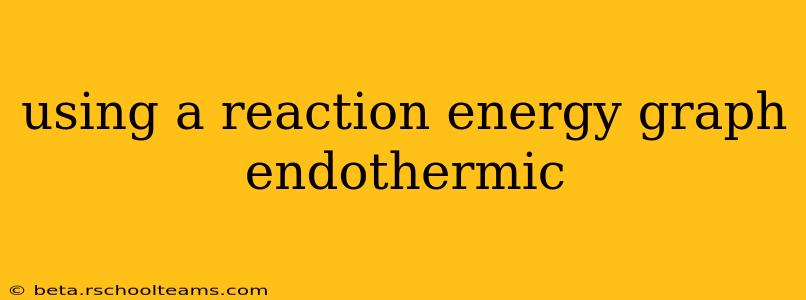Reaction energy graphs are invaluable tools for visualizing the energy changes that occur during a chemical reaction. They provide a clear picture of whether a reaction is exothermic (releases heat) or endothermic (absorbs heat). This post will focus specifically on interpreting reaction energy graphs for endothermic reactions, explaining the key features and how to understand them.
What is an Endothermic Reaction?
Before diving into the graphs, let's refresh our understanding of endothermic reactions. An endothermic reaction is a chemical reaction where the system absorbs heat from its surroundings. This absorption of energy results in a net increase in the system's energy. Think of it like this: the reactants need energy input to transform into products. Common examples include photosynthesis (plants absorbing sunlight) and the dissolving of many salts in water.
Deconstructing the Endothermic Reaction Energy Graph
The key feature distinguishing an endothermic reaction graph from an exothermic one is the relative energy levels of the reactants and products.
Key Components of the Graph:
- Reactants: This point on the graph represents the total potential energy of the reactants before the reaction begins.
- Products: This point represents the total potential energy of the products after the reaction is complete.
- Activation Energy (Ea): This is the minimum energy required for the reaction to proceed. It's the energy barrier that must be overcome to convert reactants into products. It's represented by the difference in energy between the reactants and the highest point on the curve (the transition state).
- ΔH (Enthalpy Change): This represents the overall energy change of the reaction. In an endothermic reaction, ΔH is positive because the products have higher energy than the reactants. This is visually represented by the difference in energy between the reactants and the products. The positive ΔH signifies the energy absorbed by the system.
- Transition State: This is the highest point on the curve, representing the point of highest energy during the reaction. It's a temporary, unstable arrangement of atoms.
Visual Representation:
An endothermic reaction graph will always show the products at a higher energy level than the reactants. The energy difference between them is the positive ΔH. The activation energy (Ea) is still present, indicating the energy barrier that needs to be overcome.
Energy
|
| Transition State
| / \
| / \
Products | / \
| / \
| / \
| / \
|/_________________\
| \
| \
Reactants | \
|____________________\
| Reaction Progress
Practical Applications and Examples
Understanding endothermic reaction energy graphs is crucial in various fields:
- Chemistry: Predicting the feasibility and spontaneity of reactions.
- Chemical Engineering: Designing and optimizing industrial processes.
- Environmental Science: Understanding natural processes like photosynthesis and climate change.
By analyzing the energy changes depicted in the graph, chemists can determine the feasibility of a reaction, its rate, and the energy requirements needed to drive it. This knowledge is essential for developing new chemical processes and technologies.
Conclusion
Reaction energy graphs are powerful visualization tools. By understanding the key features of an endothermic reaction graph – specifically, the positive ΔH and the higher energy level of products compared to reactants – we can gain valuable insights into the energy changes involved in these reactions. This knowledge is fundamental to various scientific and engineering disciplines.
